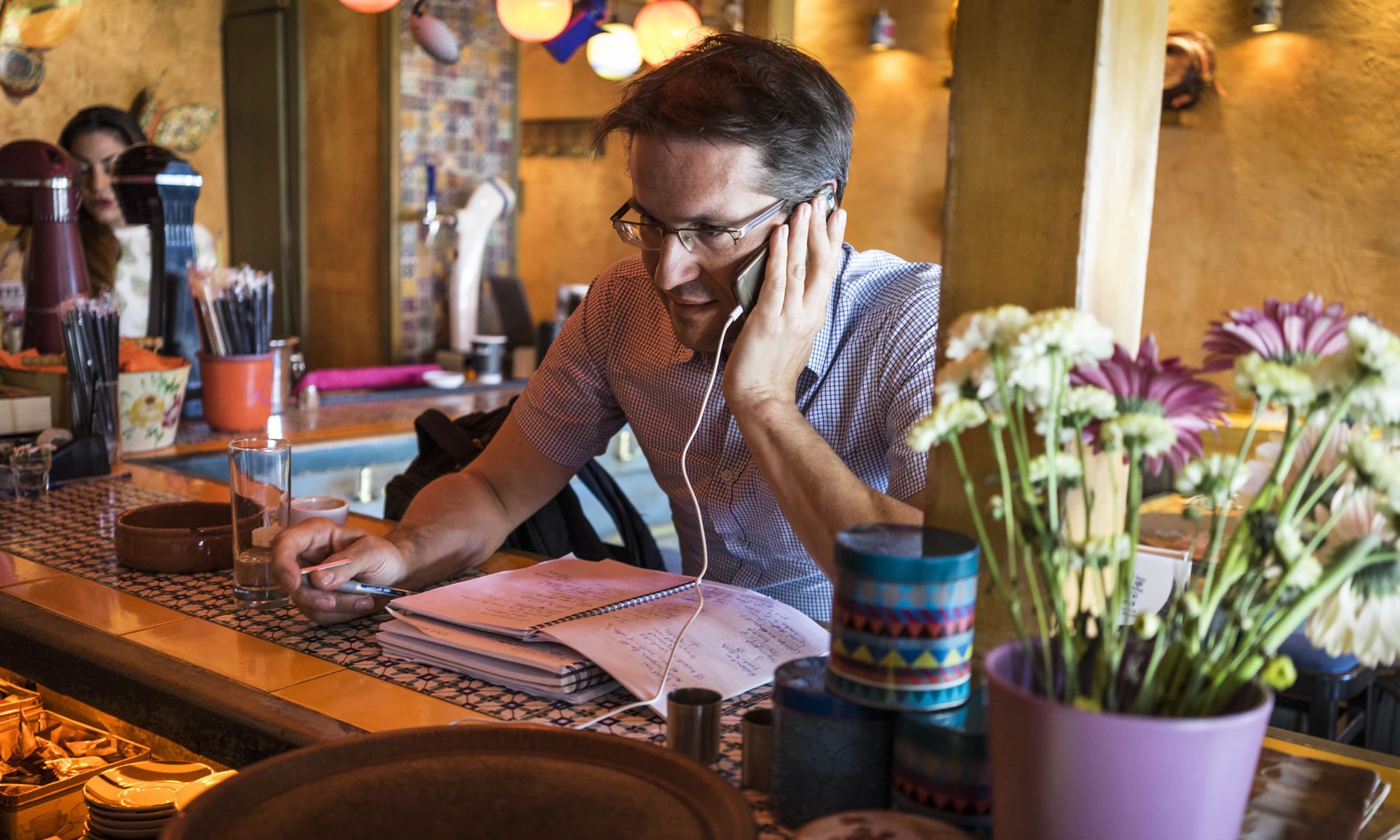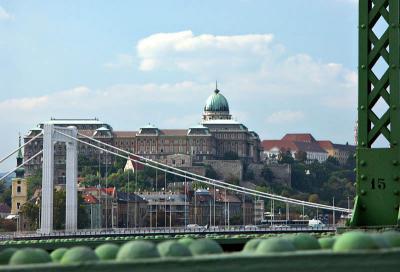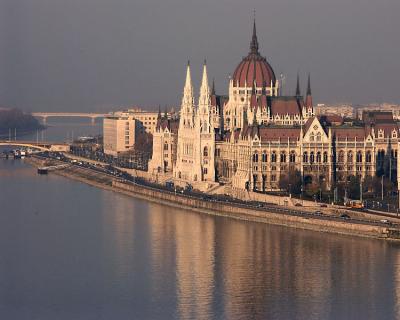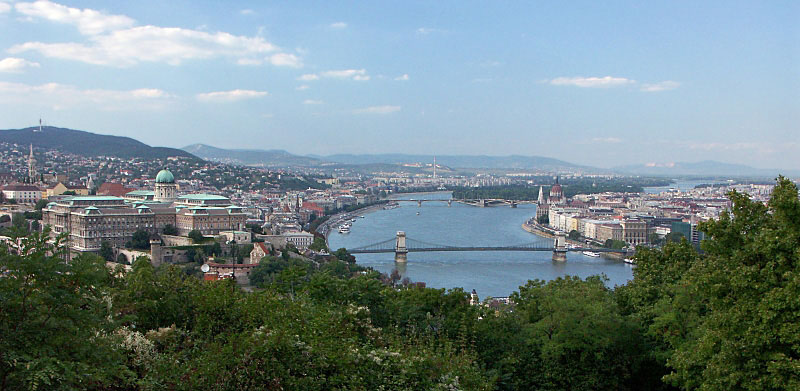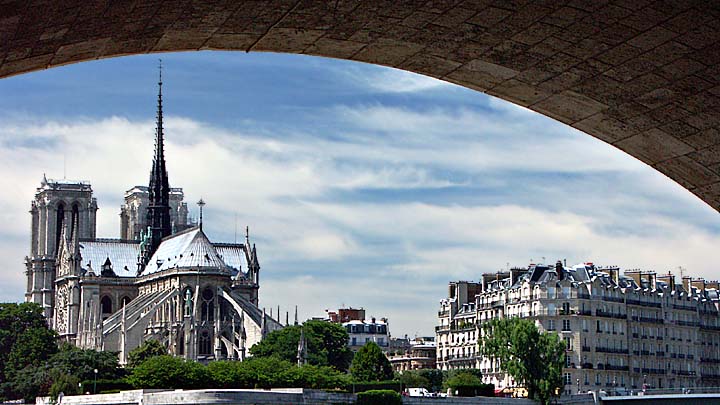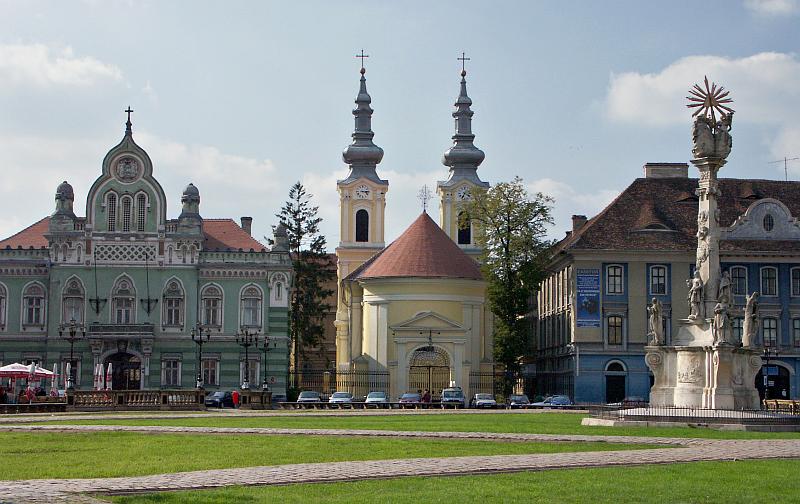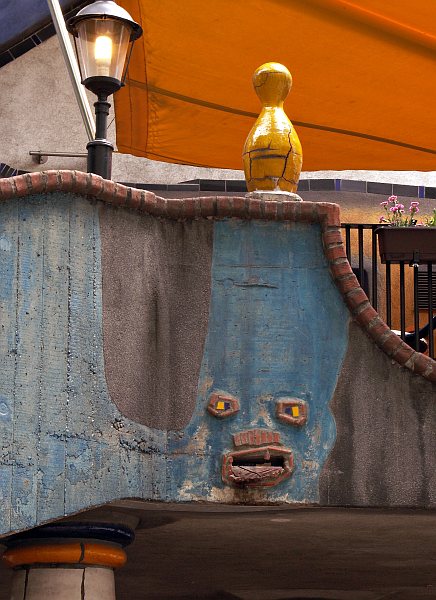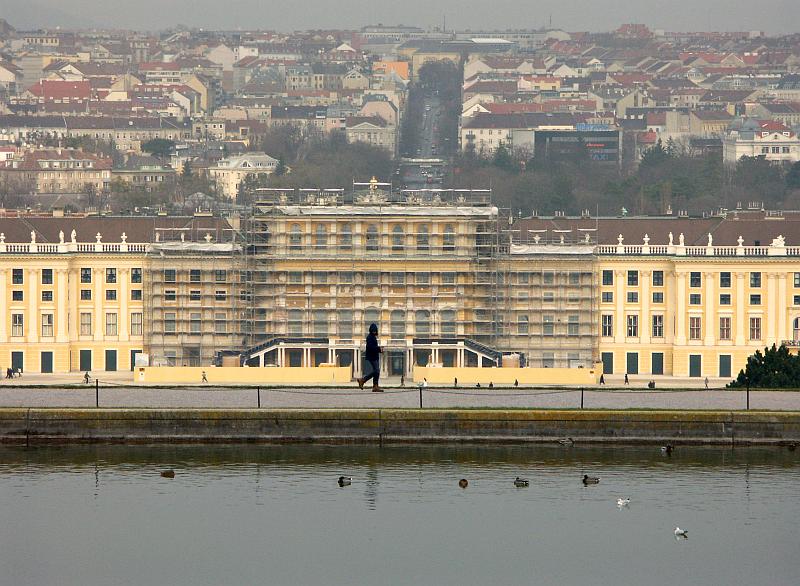Anybody who in their youth has read George Orwell’s book on the Spanish Civil war in Catalonia is likely to think of him when visiting Barcelona. Not that there is anything that reminds a visitor in November 2007 of the Spain in 1937 that Orwell evokes. His city was one in which armed guards roamed in the streets, in which bread was scarce, and in which people were arrested at random. An anarchist uprising had been defeated in 1937 and Stalinism was rearing its ugly head behind the Republican front-lines of the Spanish civil war: a dark moment in an even darker decade. As Orwell put it:
“It is not easy to convey the nightmare atmosphere of that time – the peculiar uneasiness produced by rumours that were always changing, by censored newspapers, and the constant presence of armed men. It is not easy to convey it because, at the moment, the thing essential to such an atmosphere does not exist in England. … the notion of ‘liquidating’ or ‘eliminating’ everyone who happens to disagree with you does not yet seem natural. It seemed only to natural in Barcelona.”
In fact, one can still walk down the tree-lined ramblas boulevard (today packed with tourists) to the Cafe de l’Opera which Orwell describes. One can also go in search of bullet holes in the walls in some hidden courtyards in the old town that (I was told) go back to the Spanish civil war.
When I worked here as a guide for Austrian tourists in the early 1990s I would present this beautiful city as the stage for a succession of bitter struggles throughout history, an epic story of its rise, fall, rise and fall (again) leading up to the 1930s. There are the monuments of the great medieval merchant city, centre of a Mediterranean Empire; the drama of Barcelona loosing its preeminence and prosperity at the beginning of the modern era (the destruction of its Jewish community being one of the reasons); repeated defeats in its struggles against the centralising Spanish crown; the 19th century rise of a new industrial power-house and the flourishing of Catalan modernity (the Barcelona modernista described by Cristina and Eduardo Mendoza); and then the bitter struggles, from anarchist terrorism to the confrontations in the Spanish civil war, ending in the deafening silence of another dictatorship. It is a riveting tale, worthy of the great epics. It also includes the most important element of a good Hollywood movie: a happy ending, sometime between the fall of Franco’s regime and the Olympic games in Barcelona in 1992.
For my tourists the dark shadows of Barcelona’s past were, of course, safely remote: even the most tragic history was ultimately info-tainment. Certainly gruesome stories of the Spanish civil war were no obstacle to feel good at the end of the day, to retire to a 4-star hotel and enjoy a good Spanish, sorry, Catalan dinner. Groups like the ones I would lead through Barcelona (at least 5 times in the early 90s) had themselves become part of a new Barcelona story: the reinvention of the city as a place of European cool and elegance, a truly post-modern place in which historical narratives were used to attract tourists.
Of course, there were also those who regarded the city’s rising popularity with foreigners as suspicious. Post-modern Barcelona is the “prototype of a factory-town”, one local anthropologist complained: too perfect to reflect any real life, too superficial, in a way dishonest, hiding its true self. Attracting 4.5 million tourists in 2005, Manuel Delgado writes, has come at the price of “destroying all spontaneity, all rebelliousness, no disobedience goes without punishment.” There is even a book to celebrate an alternative “city of rebellions”, la Barcelona rebelde. The book tells a story of uprisings and protests and celebrates the revolutionary spirit of the place, recalling times when the strength of local anarchism had given Barcelona the name rosa de foc (rose of fire), referring to the large number of arson attacks. One of the most striking quotes in that book refers to the anarchist uprising of 1937, which plays such a prominent role in Orwell’s book. It is presented as the highlight in a long tradition of revolts: “perhaps Barcelona has not been in the hands of its citizens ever since that 7 March 1937” (the day the anarchist uprising was repressed).
1937 as the “good old times”? A narrative where everything has gone downhill since the 1930s and anarchism is a political philosophy worthy of admiration? Reading this made me realize how little I really knew about the Spanish debate. But I knew enough about Barcelona’s history to be skeptical: my walking tour on the ramblas always included an account of the anarchist who had thrown two bombs in the Liceu opera house in 1893, killing 22 people. In 1909 eighty churches, monasteries and convents were burned in one week when protests against a call-up of troops to go to war in North Africa got out of hand. How could anybody innocently celebrate a “culture of protest” in the early 20th century?
I also remember another disturbing experience. On one of my last trips as a tour guide I slipped out of the hotel one evening to watch a movie by Ken Loach (Land and Freedom) about the Spanish civil war. At one moment some people in the audience broke out into loud applause. The trigger for their joy was a scene where some unarmed Franco-supporters and clergy were shot. Some in the audience cheered the execution. Stepping out of the cinema I found myself again among the bars and pleasures of the beautiful Gracia quarter, disturbed and confused.
More than a decade has passed since then. What will the admires of Barcelona rebelde make of the fact that it is no longer George Orwell who most inspires young visitors from abroad but Xavier, a 25 year old French economy student looking for pleasure and distraction; not Homage to Calalonia but Xavier’s adventures in auberge espanole? Xavier and his film do not need an introduction, I assume? Judging by the huge number of foreign students I see in the streets and bars on this mild November day there is no shortage of young Europeans who seek to follow in his footsteps: unlike Orwell, they are not drawn by an ideological battle against evil. Instead they search for fun, friendship and amorous adventures in a Mediterranean setting.
I liked auberge espanole, but then I quite like happy endings. Those with a more tragic bent of mind will find the multi-national fraternity found there infinitely less worthy of interest than the multi-national army of fighters against fascism celebrated by Ken Loach. I do wonder, however, whether Orwell would not have been the first to welcome, rather than mourn, the recent transformation of Barcelona: the city which he left as a fugitive turning into a centre of innocent (and international) hedonism. Is this not another European miracle worthy of celebration? A city that has set aside its tragic history, turning it into a fairy tale of Barcelona modernista, Gaudi and Miro, Gothic churches and the FC Barcelona? Today websites discussing ‘”what is cool in Europe” no longer mention anarchism but coffee:
“barcelona is also fabulous, and the rambla is not really too dangerous – there’s just scammers. keep your wits about and you’ll have a great time. take the stairs in sagrada familia cathedral rather than the elevator, your legs will hurt but it’s worth it – like climbing a giant seashell with amazing views. the textile museum has a lovely cafe. the cafe del’opera bar is great for cava and people-watching. oh, and – spanish coffee is like crack. uno mas caffe con leche y sucre, por favor!”
It is a city – in a country – marked by material progress, a booming economy, a vigorous democracy, even a European model in terms of gender relations (as measured by the WEF’s gender gap index). If the price for all this is consumerism and some superficiality, so be it. A country, where even crazy people escaping from the mental asylum – Antonio Banderas kidnapping Victoria Abril in Tie me up! Tie me Down! – have a soft spot and a good heart is a civilised place indeed.
But the cheering in the cinema and the celebration of anarchism still made me wonder to what extent I understood what was going on. Had Spain really turned into the grand island of Circe so attractively depicted in auberge espanole? On one of my trips I had seen a book by Giles Remlett “The Ghosts of Spain – Travels through Spain and its silent past” which promised to offer some answers. I bought it to read it during an upcoming trip to Barcelona. An invitation in November 2007 to give a presentation on the Balkans provided the opportunity.
Ghosts of Spain
Cidob is one of the leading think-tanks in Spain, wonderfully located in an old town house in the centre of the city. It is close to the museum of modern art, surrounded by small boutique shops and cafes. My presentation is in the morning, the audience is a group of Catalan academics, journalists, business people. My host is the president of Cidob and former Spanish minister of defence, deputy prime minister and previous mayor of Barcelona, Narcis Serra. The topic is the future of the Balkans: Kosovo, Bosnia, Serbia, and the fact that in the Balkans the transformation and Europeanisation that Spain has gone through remains far from completed.
I report on new research from Serbia and Bosnia; on the struggles to overcome the legacies of the past in these places; on the achievements of the people of Ahmici (the scene of a gruesome massacre in Central Bosnia in 1993) and on the risk that some brave individuals in Serbia are still running today as they try to confront the legacies of the murderous 90s.
As always there are some in the audience who have difficulty to image the Balkans as part of modern Europe, who believe that while the rest of Europe is able to banish its ghosts this very same feat is beyond the Balkans, which are somehow condemned to be part of a different world for ever. Others in the audience are well informed. Some have even worked in the region in the 1990s (there was a lot of solidarity in Barcelona for war-time Sarajevo, a fellow Olympic city, shelled when Barcelona held its games in 1992). Narcis Serra, of course, knows both the Balkans and the difficulties of transition, having first reformed civil-military relations in Spain and then advised a number of other governments on this matter, including Boris Tadic, when the latter was minister of defense in Belgrade.
Following the presentation I retreat to a cafe near Plaza Catalunya and open my book, “The Ghosts of Spain”. It is a strange experience: sitting in this cosmopolitan, joyful city on a sunny autumn day, having defended the Europeaness of the Balkans, delving into the secrets of Spain, and suddenly discovering unexpected connections between recent events in the Balkans and here.
Giles Tremlett, the author of this extremely well written book, sets out to describe what he calls the surprising Spanish “relationship with silence”: the pacto del olvido (the pact of forgetting) that has marked Spain’s transition from Franco’s authoritarianism to today’s democracy in the 1970s and since, as well as its (very recent) unraveling. Tremlett describes how in 2000 a Spanish journalist went to the village of his grandfather in Leon to find the roadside grave where his grandfather, a civilian shot by a death squad of France supporters, had been burried:
“DNA tests, carried out by Spanish forensic scientists with experience in digging up much more recent mass graves in Chile or Kosovo, finally enabled him to identify his grandfather …. Suddenly, it turned out, there were graves all over the place. Spain was sitting on what campaigners claimed were tens of thousands of such corpses.”
This experience triggered Tremlett interest:
“As history erupted from under the ground, I decided to turn my back on Spain’s glittering, entertaining and enticing surface. I wanted to undertake what one Italian writer called ‘that difficult voyage, to travel through time and space across the country.'”
In fact, until 2000 a pact of silence (whose legal expression was the Amnesty Law of 1977) concerning the civil war and the crimes immediately following it by the victors was largely respected. Even very recently, when the Spanish parliament in 2002 approved a motion that agreed that local authorities could, if they wanted, set aside funds for exhuming bodies, it also told them to avoid “reopening old wounds or stirring up the rescoldo, the embers, of civil confrontation.” As Tremlett notes:
“That a European parliament should, at the turn of the twenty-first century, be passing motions about a war that finished sixty-three years before may seem surprising. That it should include in one of those motions a stern warning about reviving the embers of that confrontation shows that the Civil war still had the power to provoke fear.”
Tremlett points out that there are “still thousands of bodies in unmarked graves. The highest estimates talk of 30,000 unidentified corpses. Around 300 have now been recovered.” And he quotes the Spanish author Isaias Lafuente:
“Can a democratic country allow thousands of citizens murdered like animals by a dictatorial regime to remain burried in its roadside ditches? Can it tolerate this while a man who allowed and encouraged the mass killings rests under the altar of a Christian basilica? The answer is so obvious that it is almost an offence to have to ask the question.”
Tremlett concludes that the Spanish Transicion “was a success because Spaniards made a supreme effort to find consensus.” At the same time the transition was still very violent, with more than a hundred demonstrators killed by the police in its first five years and many more killed by ETA and other left-wing terrorist groups.
As I set aside the book and look around at the affluent young crowd in this Barcelona cafe on this November day in 2007 my thoughts wander back to the Balkans. Why is so hard for outsiders to show respect for the achievements of people there? Have we forgotten how hard the road to a democratic consensus, to stability and prosperity, was in our own countries?
In fact, it did not take Bosnians decades to answer the question posed by Lafuente: a sign of European maturity that deserves some recognition. And if we expect Serbs (I believe rightly) to confront the crimes of their recent past, to openly address atrocities committed in their name in neighbouring states and in Kosovo and to hand over those responsible for mass killings: should we not at least be more aware of the enormity of this challenge under conditions of physical isolation, economic turmoil and social crisis? The outside world reprimands Kosovars (I believe rightly) for not setting aside all feelings of hatred against former oppressors, for not turning a page and moving on. However, why are we not more prepared to accord respect for those efforts that are made in this direction?
Tremlett notes that “Spain will probably not be fully ready to confront its most bloody episode until all those involved are dead.” The people of the Balkans do not have this choice: they try to build new forms of consensus, stable democracies and prosperous economies while at the same time confronting the ghosts of their pasts. In the long run I believe that this could well be to their advantage: but in the short term it certainly requires a modicum of understanding – if not empathy – by outsiders for the challenges faced by the people of the region.
Or is there another way to read the Spanish experience? Certainly if you are interested in how countries – in the Balkans, Turkey, elsewhere in Europe – deal with their past I highly recommend The Ghosts of Spain. And do let me know, once you have read it, what, if any, the lessons of Spain in your view might be for the countries of the Balkans.
